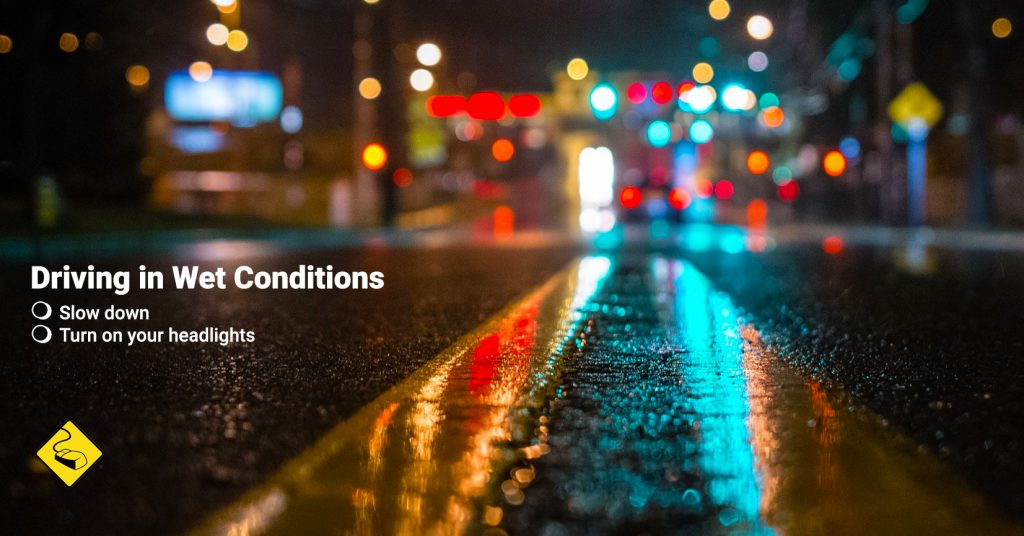Driving in Wet Conditions
August 3, 2017 | in Defensive Driving TipsIt’s raining, Great! Rain doesn’t change your daily meetings, your commute to the airport or to the office to prepare for the day. However one thing is certain; rain means your commute to wherever you need to go just got longer, much longer. How do you get to your destination safely driving in these wet conditions? You’re in a hurry to get to your destination in the rain with other drivers rushing to do the same too.

Speed
The first thing standing between you and safety during a wet commute is your speed. Speed factors into everything where driving is concerned. A as rule of thumb it is recommended that you decrease your speed by a third during wet conditions. Let’s do the math; If you’re driving the speed limit down I-10 to get into Houston at 65 mph normally, then during wet conditions you should drive 43 mph. Speed in wet conditions affect stopping and braking distance too. Under dry conditions when traveling at 70 mph you can expect an average overall stopping distance between 315 – 320 feet. To put the those numbers into perspective: that’s more than the lengths of two football fields.
Now that you are maintaining a safe distance between yourself and the car in front of you and you’re watching your speed, what’s next?
Visibility
The second thing you should check is visibility of your vehicle by other drivers. Depending on the intensity of the thunder storm or rainfall visibility might be a very real challenge. To increase your visibility to other drivers you should always turn on your headlights. Technically it is recommended that you turn on your headlamps in any condition that obscures visibility. Headlamps become a bigger necessity if the intensity of rain is so much so that you have less than 1000 feet of visibility. In addition it is Texas law. Furthermore if your wipers are on you should also turn on your headlamps. In some cases automobile manufacturers make cars with running daylights (headlamps that stay on always).
Cruise Control
As you would imagine, reaction time in wet conditions are even more important than they are normally. Car manufacturers from the last decade have made one feature a mainstay in everything from base to fully loaded options on cars; cruise control. Cruise control takes away your ability to react as quickly as possible, leaving your car in auto-mode more-or-less for longer than you would like it to be in case of an emergency. The cruise control feature also increases the possibility of hydroplaning and ultimately losing control of your vehicle in wet conditions.
Everyone will have to deal with hydroplaning at some point or other, in wet road conditions. Do you know how to respond if your car begins to hydroplane?
Hydroplaning, Regaining Control
Safety in wet road conditions should also include how to react in case of incidents like hydroplaning. If you begin to lose control of your vehicle in wet conditions you should first avoid slamming on the brake. It may be easier said than done but it helps. Slamming on the brake throws the vehicle’s balance off even further and make re-establishing control of the wheel, much more difficult. When losing control you should remain as observant as possible and steer the car in the direction you want it to go.
In conclusion, everyone should be vigilant and pay attention when operating a vehicle. That vigilance should be increased in wet inclement conditions. Slowing down is your first line of defense, your second is to establish your visibility to other drivers and lastly to avoid the cruise control feature.
For more tips on driving in the rain check out this Defensive Driving blog: Tips for Driving Safely in the Rain.
← The US Autobahn: Texas State Highway 130 | Safety Tips For Sharing the Road with Motorcyclists →




